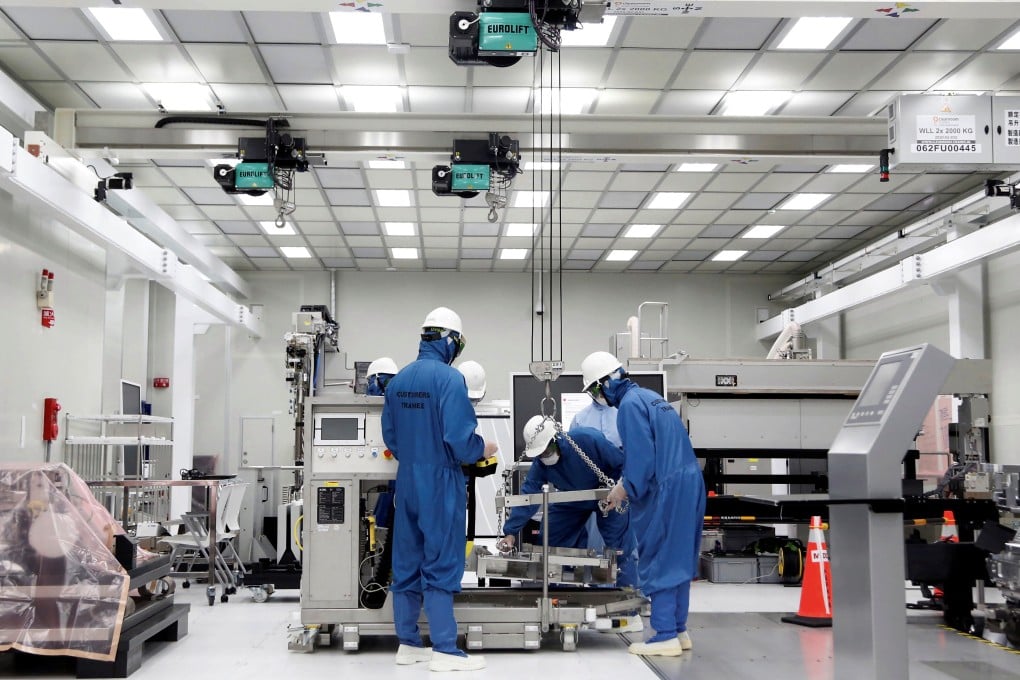Tech war: broader ban on ASML sales to China will hurt firm’s revenue and set back Beijing’s domestic chip-making drive, analysts say
- ASML could lose around US$2 billion in revenue if deep ultraviolet (DUV) technology sales to China are blocked, according to one analyst
- While a broader sales ban on ASML remains an extreme scenario, it is ringing alarm bells in Beijing

ASML Holdings, which has a monopoly position in the production of advanced chip-making machines, could suffer heavy revenue losses if it heeds a US demand to stop selling more equipment to China, according to experts and industry analysts.
The Dutch lithographic equipment maker is not currently selling extreme ultraviolet lithography (EUV) systems to China, making it impossible for the country to make cutting edge chips, such as those used in the latest smartphones.
However, the Dutch government said last week that Washington now wants to block ASML from exporting less advanced deep ultraviolet (DUV) lithography systems to China, according to a Bloomberg report.
In response to questions from the Post, ASML downplayed the government talks and said “the discussions are not new and no decisions have been made”.
ASML could lose around US$2 billion in revenue if DUV sales to China are blocked, according to Wang Xiaolong, research head at Shanghai-based semiconductor consultancy ICWise. “The impact is much higher than the ban on EUV.”
While a total sales ban on ASML remains an extreme scenario, it is ringing alarm bells in Beijing, as DUV is used in a wide range of chip-making processes. Foundries with capacity expansion plans targeting mature nodes spanning 28-nanometre, 55-nm and 65-nm would bear the brunt of proposed sanctions in this area, according to experts.